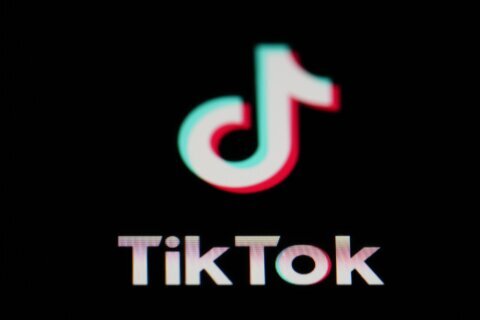When selecting funds for a long-term investment portfolio, one crucial aspect investors should consider is the tracking error. This term refers to the divergence in performance between a mutual fund or exchange traded fund, or ETF, and its benchmark index.
Essentially, it’s the difference between the returns you expect and what you actually get from your investment. Significant tracking errors mean your investment isn’t performing as closely to its benchmark as you might have intended, which can be particularly detrimental over an extended period.
The causes of tracking error can be multifaceted. Sometimes funds use sampling methodologies to replicate an index, meaning they select a representative subset of securities rather than holding every asset in the index, which can lead to a discrepancy in performance.
High turnover within the fund can also contribute to this, as it might cause transaction costs. When portfolio managers buy and sell frequently, the commissions and spreads from trading can cause their fund’s returns to lag the benchmark.
[Sign up for stock news with our Invested newsletter.]
However, one of the most influential factors is the fund’s fees. Even a small difference in fees — measured in basis points, where one basis point is one-hundredth of a percentage point — can lead to a noticeable gap in performance over time.
This is why for those interested in a buy-and-hold strategy, it’s recommended to seek out low-cost, passively managed funds with minimal turnover. These characteristics help to minimize tracking error, ensuring that the investor’s portfolio performs more consistently in line with the benchmark.
Vanguard is renowned for offering such funds. Known for its low-cost ethos, Vanguard provides a wide range of options for retail investors looking to minimize tracking error in their long-term investments.
With 192 mutual funds and 82 ETF share classes available to retail investors, Vanguard’s offerings can have expense ratios as low as 0.03%.
“Very few, if any, investors should be paying 1% each year for investment advice and portfolio management,” says Jordan Taylor, an independent financial advisor at Core Planning. “Vanguard does a great job of trying to provide as many low-cost investment options as they can, something many asset management firms fail to do.”
A 0.03% expense ratio translates to just $3 in annual fees for a $10,000 investment, exemplifying the company’s commitment to affordability and making it a prime choice for investors who value cost efficiency as a cornerstone of their investment strategy.
“Cost is important, as a fund’s expense ratio comes directly out of the performance that an investor will earn,” says Daniel Dusina, director of investments at Blue Chip Partners Inc.
Here are seven of the best Vanguard mutual funds and ETFs to buy and hold:
| Mutual fund or ETF | Expense ratio |
| Vanguard 500 Index Fund Admiral Shares (ticker: VFIAX) | 0.04% |
| Vanguard S&P 500 ETF (VOO) | 0.03% |
| Vanguard Total Stock Market Index Fund Admiral Shares (VTSAX) | 0.04% |
| Vanguard Total Stock Market ETF (VTI) | 0.03% |
| Vanguard Total World Stock Index Fund Admiral Shares (VTWAX) | 0.1% |
| Vanguard Total World Bond ETF (BNDW) | 0.05% |
| Vanguard Target Retirement 2060 Fund (VTTSX) | 0.08% |
Vanguard 500 Index Fund Admiral Shares (VFIAX)
Buy-and-hold investors in it for the long run will find few funds that have consistently managed to rival or beat the S&P 500 index over a decade-long time horizon. In fact, the most recent update to the S&P Indices Versus Active, or SPIVA, report shows around 92% of all U.S. large-cap funds failed to outperform the S&P 500 index over the trailing 15 years as of June 30.
As the saying goes: “If you can’t beat them, join them.” Investors looking to passively track the S&P 500’s long-term returns can easily do so via VFIAX. This Vanguard fund dates back to Nov. 13, 2000, and has returned an annualized 11.1% over the trailing 10 years as of Oct. 31. VFIAX charges a low 0.04% expense ratio but does require a $3,000 minimum investment.
Vanguard S&P 500 ETF (VOO)
VFIAX’s $3,000 minimum investment requirement can be a barrier to entry for younger and newer investors with less capital. An alternative is VFIAX’s ETF share class counterpart, VOO. This ETF also tracks the S&P 500 index. However, unlike VFIAX, the price of investing in VOO is the cost of one share, which currently sits at around $402. For those with fractional trading, the cost can be even lower.
There are some other differences to be aware of, though. With a mutual fund like VFIAX, all investors buy at the end of trading day at the fund’s net asset value. Unlike VFIAX, the price of VOO fluctuates throughout the day as investors buy and sell shares on the market, like a regular stock. VOO is also slightly cheaper than VFIAX, with a 0.03% expense ratio.
Vanguard Total Stock Market Index Fund Admiral Shares (VTSAX)
A common misconception is that the S&P 500 index represents the overall U.S. stock market. While it is a viable benchmark of U.S. stock performance, it actually excludes a decent portion of listed U.S. companies, particularly some mid- and small-cap stocks that don’t meet the S&P 500’s index selection criteria. For exposure to these stocks, consider VTSAX, which has a much broader focus.
This fund is designed to passively track the CRSP U.S. Total Market Index, holding over 3,800 large-, mid- and small-cap U.S. stocks from all 11 sectors. As a market-cap-weighted fund, large-cap stocks in VTSAX still receive higher allocations, so the fund is overall very similar to VFIAX in terms of top holdings. Investors can expect a $3,000 minimum investment and a 0.04% expense ratio.
Vanguard Total Stock Market ETF (VTI)
One of Vanguard’s most important strategic patents was the ability to offer ETF share classes of its mutual funds, which provided investors with tax efficiency and flexibility. Although now expired, the effects of that patent can still be seen with VTI, the ETF share class of VTSAX. Investors can gain access to the same portfolio held by VTSAX via VTI, which costs around $216 per share.
Historically, VTI has been competitive in terms of returns compared to the S&P 500 thanks to its similar top holdings and market-cap-weighted strategy. Over the trailing 10 years, VTI has returned an annualized 10.5%. Given that VTI and VOO have similar holdings and performance, yet track different indexes, investors can potentially use them as tax-loss harvesting partners. VTI charges a 0.03% expense ratio.
[READ: 7 Best Vanguard Bond Funds to Buy]
Vanguard Total World Stock Index Fund Admiral Shares (VTWAX)
The problem with funds like VTSAX and VFIAX is a U.S.-centric focus. While this can be desirable for some investors, it’s a bet that U.S. market outperformance will continue in perpetuity. For those who believe in geographical diversification, a global equity fund like VTWAX may be a more sensible holding. This fund tracks the FTSE Global All Cap Index for a 0.1% expense ratio.
Because VTWAX is market-cap weighted, about 60% of its portfolio is still held in U.S. stocks. The next 30% is allocated to international developed markets, and the remaining 10% is dedicated to emerging markets. For investors looking to avoid the $3,000 minimum investment required by VTWAX, the Vanguard Total World Stock ETF (VT) is also available for about $94 per share.
Vanguard Total World Bond ETF (BNDW)
Bonds may have suffered an unusual losing streak throughout 2022 and 2023 as interest rates rose, but it’s worth remembering that historically, they have provided long-term diversification benefits. Given that they’re less correlated to stocks and have lower volatility in the aggregate, an allocation to bonds can help investors lower portfolio volatility and drawdowns, as well as improve risk-adjusted returns.
For maximum diversification in bond investing, consider BNDW. This ETF uses an “ETF of ETFs” structure to wrap two other Vanguard bond funds, the Vanguard Total Bond Market ETF (BND) and the Vanguard Total International Bond Market ETF (BNDX), in a roughly 50/50 allocation. The all-in cost for BNDW sits at 0.05%, which includes the underlying fees of BND and BNDX.
Vanguard Target Retirement 2060 Fund (VTTSX)
By combining VT and BNDW, investors can create a globally diversified stock-and-bond portfolio using just two ETFs. However, this approach still requires manual rebalancing to ensure alignment with an investor’s changing time horizon and risk tolerance. For an even more hands-off approach, consider a target-date fund like VTTSX, which is intended for those looking to retire around 2060.
Essentially, VTTSX provides an automated portfolio of global stocks and bonds that will adjust over time to match an investor’s changing circumstances. Right now, this fund is about 90% in stocks and 10% in bonds, befitting a younger investor. As the years pass, VTTSX will become more and more conservative, with a heavier bond allocation to decrease risk. The fund charges a 0.08% expense ratio.
More from U.S. News
8 Top-Performing Fidelity Funds for Retirement
Vanguard vs. Fidelity: Which Is Better for You?
7 of the Best Charles Schwab Mutual Funds
7 Best Vanguard Funds to Buy and Hold originally appeared on usnews.com
Update 11/09/23: This story was previously published at an earlier date and has been updated with new information.







